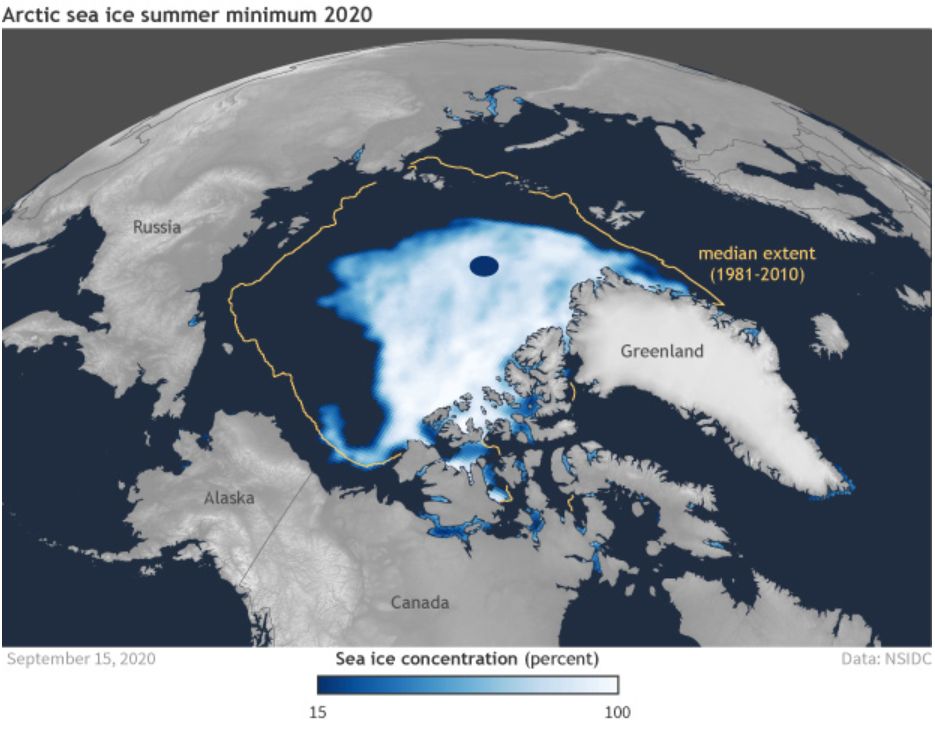
Arctic sea ice melts in the summer reaching it’s lowest extent every year in September. On 21 September 2020, Climate.gov reported that ice coverage reached its minimum on 15 September, the second lowest extent in 40 years of tracking. (The lowest low was in 2012 only 8 years ago.)
We might think this lack of sea ice won’t affect us but in fact ice acts like a thermoregulator, reflecting the sun’s heat so that Earth’s climate stays relatively constant. As the ice disappears we’re subjected to heat waves, droughts, fires, and the cold Polar Vortex.
This 5-minute video from NASA Goddard shows how Arctic sea ice is connected to everything else.